Could this fuzzy blob be the key to the whole gamma-ray burst (GRB) mystery? Astronomers the world over are now scrambling to determine the true nature of the extended emission seen to the lower right of the bright source in the above image. The bright object in the center is rapidly fading - and thought to be the first true optical counterpart to a GRB. But is it housed in a galaxy? If so, after the central emission has faded, this galaxy should be identifiable. Today, follow up observations of this blob are planned with the Hubble Space Telescope. If the extended emission does come from a galaxy it would bolster indications that the February 28th GRB occurred in that galaxy, across the universe from us. This, in turn, would imply that GRBs are truly the most powerful explosions ever known.
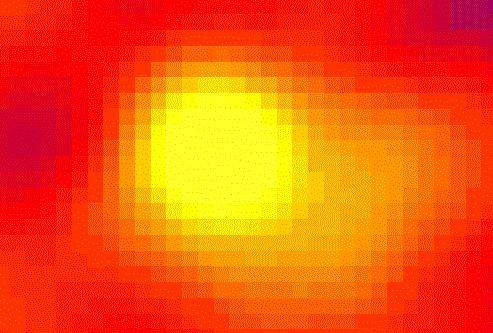
Undulating bright ridges and dusty clouds cross this close-up of the nearby star forming region M8, also known as the Lagoon Nebula. A sharp, false-color composite of narrow band visible and broad band near-infrared data from the 8-meter Gemini South Telescope, the entire view spans about 20 light-years through a region of the nebula sometimes called the Southern Cliff. The highly detailed image explores the association of many newborn stars imbedded in the tips of the bright-rimmed clouds and Herbig-Haro objects. Abundant in star-forming regions, Herbig-Haro objects are produced as powerful jets emitted by young stars in the process of formation heat the surrounding clouds of gas and dust. The cosmic Lagoon is found some 5,000 light-years away toward constellation Sagittarius and the center of our Milky Way Galaxy. (Editor's Note: For location and scale, check out this image superimposing the close-up region shown in today's APOD on the larger Lagoon Nebula. Scale image is courtesy R. Barbá.)
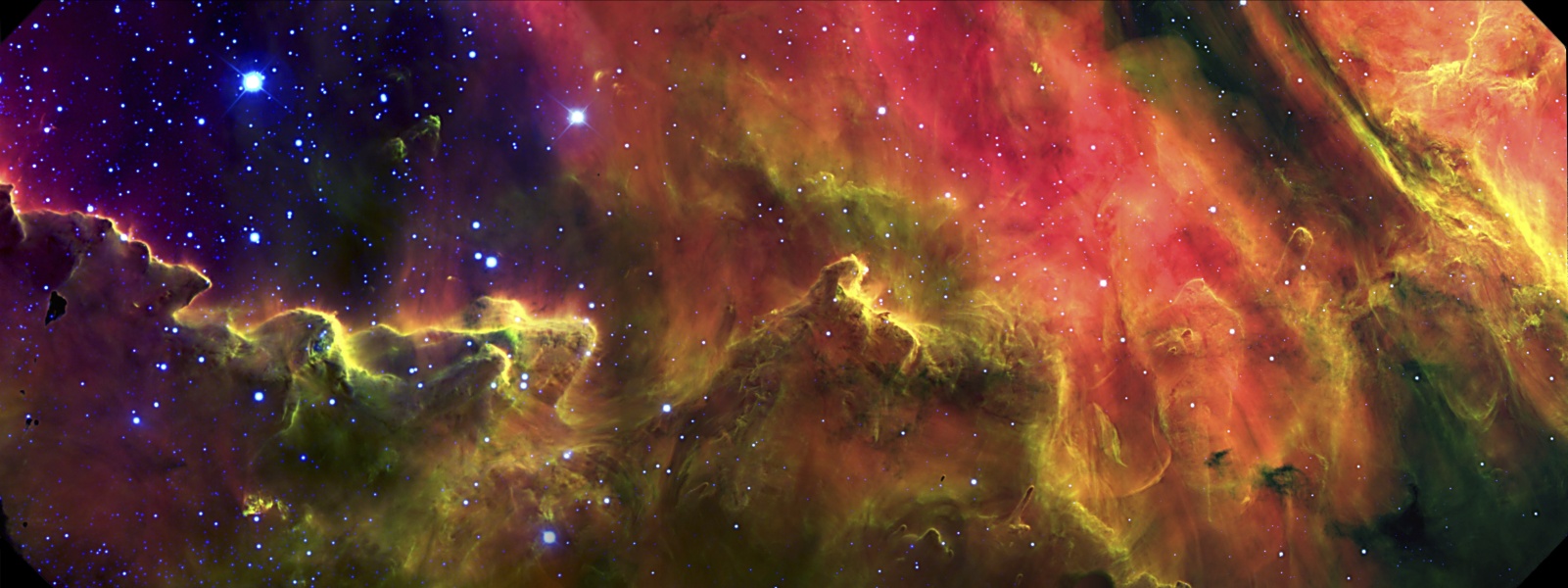
Five closely grouped galaxies are visible in this image made using the
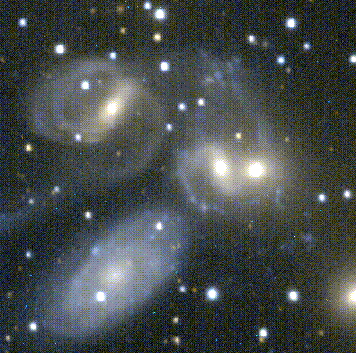
As expected, the ozone hole near Earth's South Pole is back again this year. This time, however, it's smaller than the past two years, and has an unusual double lobe structure. Ozone is important because it shields us from damaging ultraviolet sunlight. Ozone is vulnerable, though, to CFCs and halons being released into the atmosphere. International efforts to reduce the use of these damaging chemicals appear to be having a positive effect on their atmospheric abundance. The smaller size of the ozone hole this year, however, is attributed mostly to warmer than normal air in the surrounding stratosphere. The above picture of the ozone hole was taken on September 24 by TOMS on board the orbiting Earth Probe satellite.
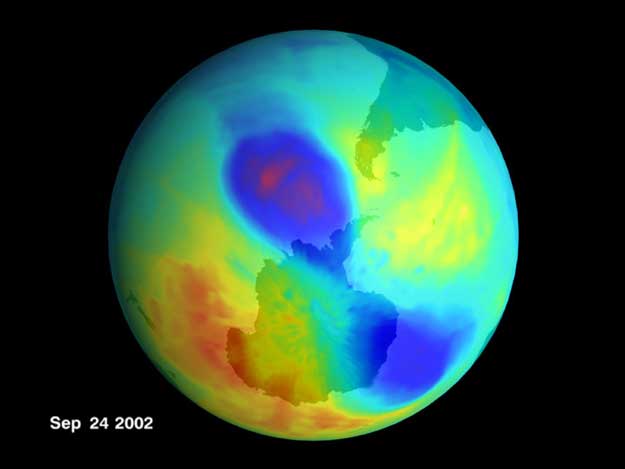
This storm cloud on Jupiter is almost as large as the Earth. Known as a white oval, the swirling cloud is a high pressure system equivalent to an Earthly anticyclone. The cloud is one of a "string of pearls" ovals south of Jupiter's famous Great Red Spot. Possibly, the Great Red Spot is just a really large white oval that turned red. Surrounding clouds show interesting turbulence as they flow around and past the oval. The featured image was captured on February 2 as NASA's robotic spacecraft Juno made a new pass just above the cloud tops of the Jovian world. Over the next few years, Juno will continue to orbit and probe Jupiter, determine atmospheric water abundance, and attempt to determine if Jupiter has a solid surface beneath its thick clouds.
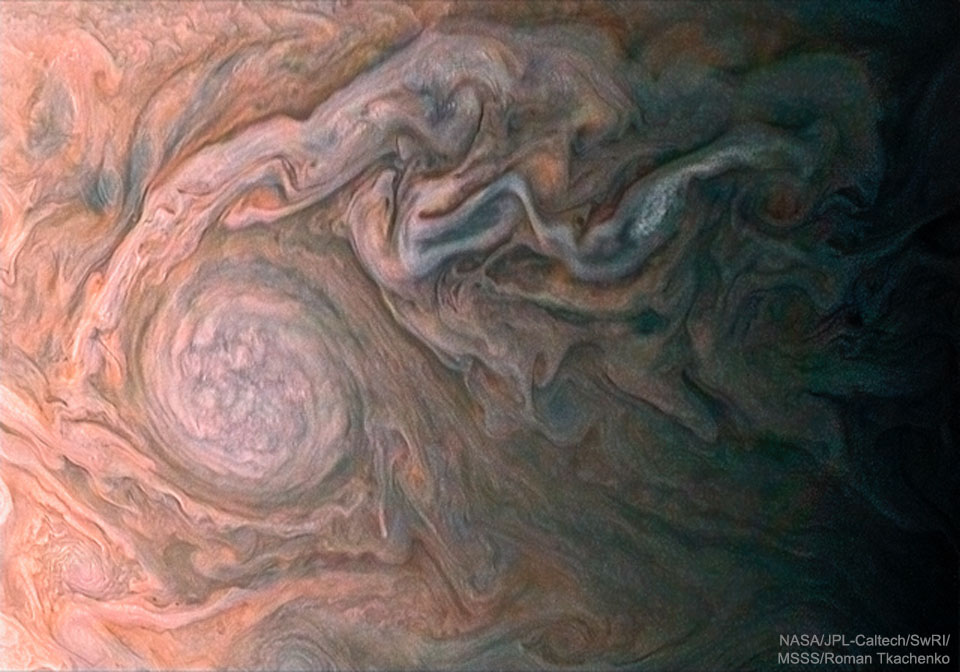
Oh what a tangled web a planetary nebula can weave. The Red Spider Planetary Nebula shows the complex structure that can result when a normal star ejects its outer gases and becomes a white dwarf star. Officially tagged NGC 6537, this two-lobed symmetric planetary nebula houses one of the hottest white dwarfs ever observed, probably as part of binary star system. Internal winds emanating from the central stars, visible in the center, have been measured in excess of 1000 kilometers per second. These winds expand the nebula, flow along the nebula's walls, and cause waves of hot gas and dust to collide. Atoms caught in these colliding shocks radiate light shown in the above representative-color picture. The Red Spider Nebula lies toward the constellation of Sagittarius. It's distance is not well known but estimated by some to be about 4000 light-years.
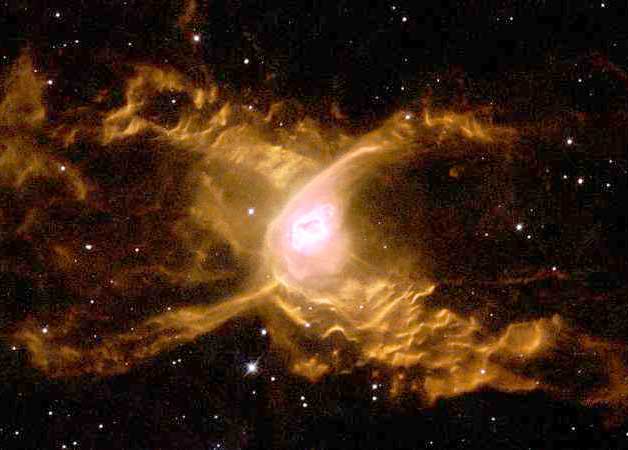
Newborn stars are forming in the Eagle Nebula. This image, taken with the Hubble Space Telescope in 1995, shows evaporating gaseous globules (EGGs) emerging from pillars of molecular hydrogen gas and dust. The giant pillars are light years in length and are so dense that interior gas contracts gravitationally to form stars. At each pillars' end, the intense radiation of bright young stars causes low density material to boil away, leaving stellar nurseries of dense EGGs exposed. The Eagle Nebula, associated with the open star cluster M16, lies about 7000 light years away. The pillars of creation were imaged again in 2007 by the orbiting Spitzer Space Telescope in infrared light, leading to the conjecture that the pillars may already have been destroyed by a local supernova, but light from that event has yet to reach the Earth. Be Honest: Have you seen this image before?
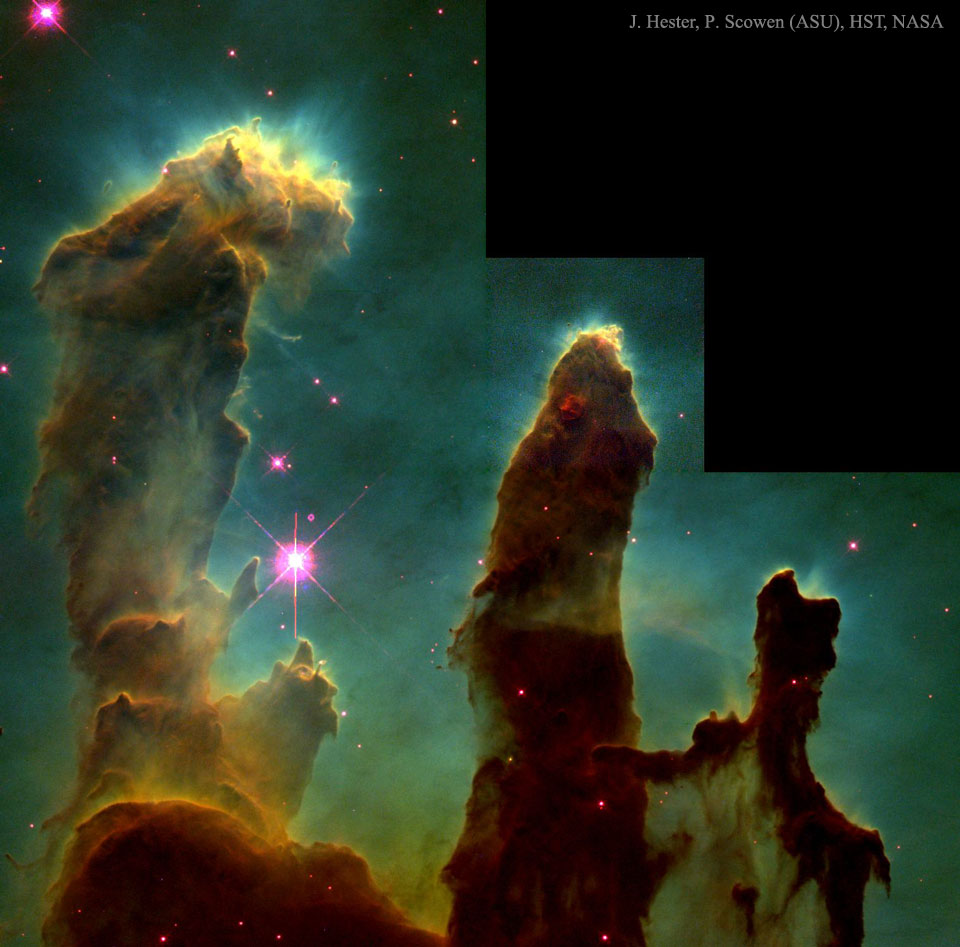
Look up into the sky tonight and without a telescope or binoculars you might have a view like this one of Moon, planets and stars. The lovely photo was taken on March 23rd, and captures the crescent Moon on the horizon with Venus above it. Both brilliant celestial bodies are over-exposed. Farther above Venus is the tinted glow of Mars with the Pleiades star cluster just to the red planet's right. The V-shaped arrangement of stars to the left of Mars is the Hydaes star cluster. Bright red giant Aldebaran, not itself a member of the Hyades cluster, marks the top left of the V. During the next week, all five naked-eye planets, Mercury, Venus, Mars, Jupiter, and Saturn, along with the Moon will grace the evening sky together - a lunar and planetary spectacle that can be enjoyed by skygazers around the world. But look just after sunset, low on the western horizon, to see Mercury before it sets. The next similar gathering of the planets will be in 2008.

The Crab Nebula is filled with mysterious filaments. The Crab Nebula is the result of a star that exploded in 1054 AD. This spectacular supernova explosion was recorded by Chinese and (quite probably) Anasazi Indian astronomers. The filaments are mysterious because they appear to have less mass than expelled in the original supernova and higher speed than expected from a free explosion. In the above picture, the color indicates what is happening to the electrons in different parts of the Crab Nebula. Red indicates the electrons are recombining with protons to form neutral hydrogen, while green indicates the electrons are whirling around the magnetic field of the inner nebula. In the nebula's very center lies a pulsar: a neutron star rotating, in this case, 30 times a second.

After a seven month voyage of nearly 500 million kilometers through interplanetary space, NASA's Spirit Rover has reached the surface of Mars. Scroll right and see a mosaic panorama of Spirit's first images returned from its landing site in Gusev Crater! Taken by Spirit's navigation camera, the panorama covers 360 degrees, with the spacecraft in the foreground and the floor of Gusev Crater, thought to be an ancient lake bed, extending to the horizon. The entry, descent, and landing phase of Spirit's mission - referred to by mission planners as "Six Minutes of Terror" - began Saturday night around 8:30pm PST as Spirit entered the martian atmosphere at about 20,000 kilometers per hour. Updates on Spirit's status will be posted throughout the day.
